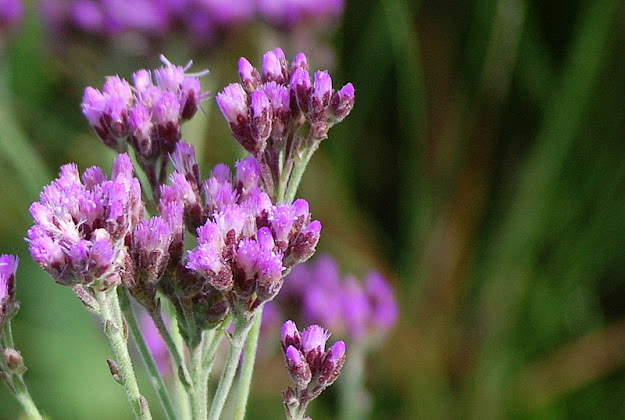"THE MONEY SHOT"
Plants, most rare and interesting, were the goal of a recent outing at the Babcock Webb Wildlife Management Area in Punta Gorda, FL
Above was indeed the rarest and most interesting find....read to the end of the post to find out what it is!
Liv and I were fortunate to be included in this outing of the Mangrove Chapter of the Florida Native Plant Society. Led by Florida Gulf Coast University Botanist, Jay Horn....we were looking for some native Milkweed....and eager to learn about other species. Jean Evoy and Jane Wallace, Liv and I were eager students.
Jay chose an area on the Tram Grade where he knew of a recent burn and the likelihood of some Milkweed.
This was a prime example of Mesic Flatwoods....but still wet from our Florida rainy season. Good time to find some interesting successional growth before the Saw Palmetto takes hold.
Thanks so much to our outing leader, Jay Horm who was a most patient teacher. We saw a lot and learned a lot. We learned to recognize new plants and more importantly we learned to use "Plant Gestalt;" to use a knowledge of habitat, surroundings, seasonality, shape and form...all keys to becoming a good field botanist...or in my case a field botany enthusiast.
Asclepias connivens
Jay teaches Biology and the course below. I would love to audit his courses!
BOT 3153 - Flora of Southwestern Florida
Description
Principals and practical aspects of the identification, morphology, and ecology of species of vascular plants composing the flora of Southwestern Florida. Included, are field trips (one per class meeting), lectures, and laboratory exercises.
This is the text used in "Florida of Southwestern Florida.and if you want to really get some knowledge I would recommend the edition below...AND FORGET ABOUT COMMON NAMES...GET USED TO SCIENTIFIC BINOMIALS!
Mesic Flatwoods link
Peucetia viridans
Green Lynx Spider
Milkweed ?? Asclepias pedicellata ?? seed pod
More for next year!
Calopogon pallidus
Physostegia purpurea
Carphenephorus carnosus
Euphyes arpa
Palmetto Skipper
Drosera capillaris
There are several different types of carnivorous plants native to Florida, including six species of pitcher plants (Sarracenia), five species of sundews (Drosera), fourteen species of bladderworts (Utricularia), and six species of butterwort (Pinguicula).Jul 1
Great idea to record your sightings on the inaturalist phone app.
Strymon melinus
Even with a long, wet walk with a modicum of gestalt, the find fo the day.....THE MONEY SHOT...was spotted by Jay as our tired group made our way back to the cars. "Whoda thunk it?" One of Florida's rarest terrestrial orchids!
Orthochilus ecristatus
Threatened species statewide with no vouchered specimens in Charlotte County per "Atlas of Florida Plants."
Habenaria quinquesta
Icing on the cake! In a swale next to our parked car, another beautiful terrestrial orchid....great spot by Olivia...
PLANT GESTALT AND SERENDIPITY!
Join us next time we go afield....lots to see and lots to learn. And "The Webb" is a wonderland of nature, right in our own SW Florida back yard!




























I just came back from several hours in the Babcock Ranch Cypress swamp on the foot prints trail. I was excited to find bobcat footprints, Snout orchids were on the trees not in bloom of course but what can you expect in February. There wasn’t a lot of water in the swamp but one did have to wade through a rather wet Prairie to get there. So many plants were in there very young stages that I naturalist would not commit to identifying them only giving suggestions. I started out at 3 o’clock in the afternoon and stayed until the frogs were calling from the wet Prairie and the sun was going down. Altogether a wonderful afternoon of exploration. I highly recommendThis adventure. It wasn’t even a half a mile down the trail to find the cypress swamp. Looking forward to going back in in the spring to see the inflorescence and some butterflies.
ReplyDelete